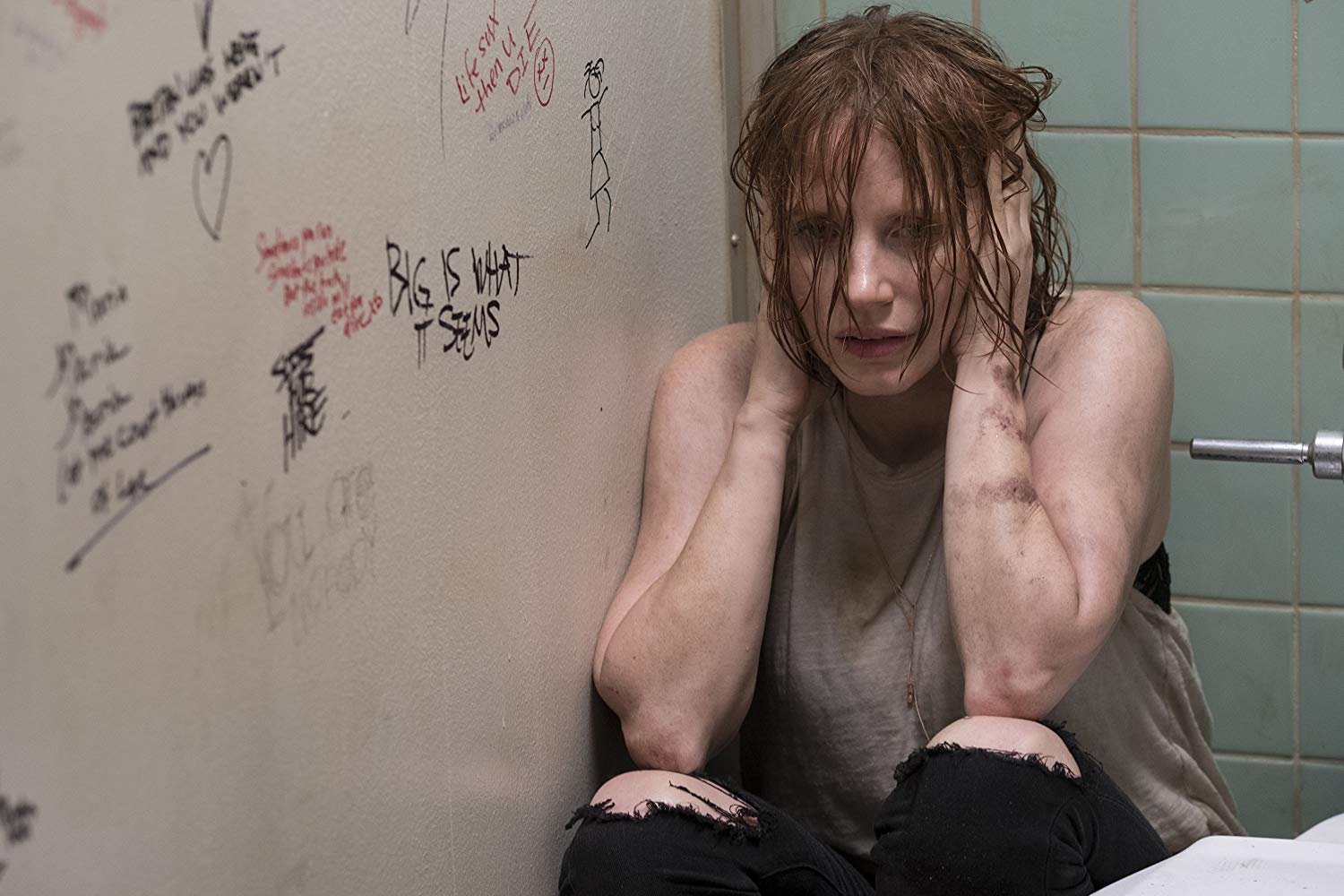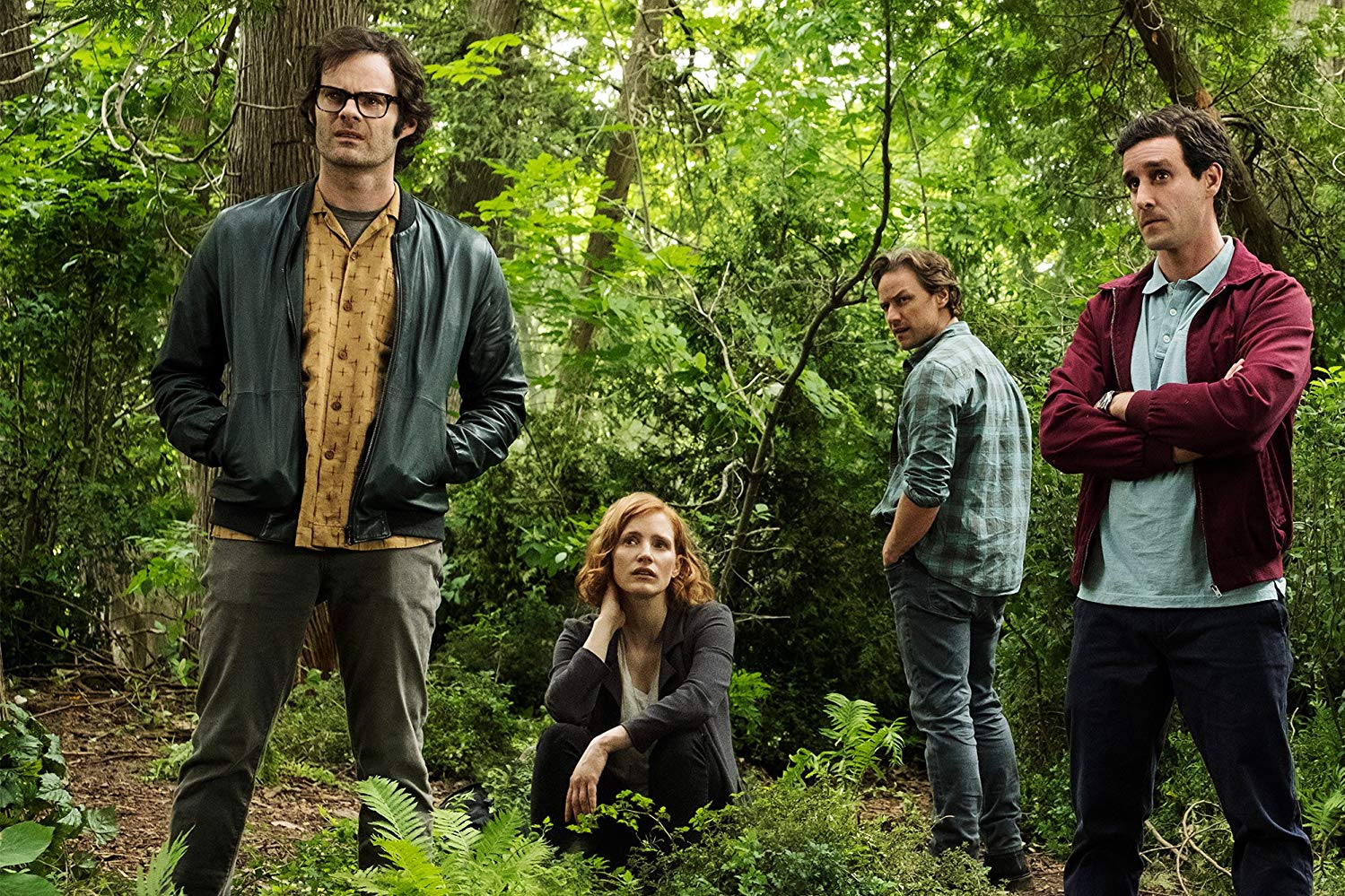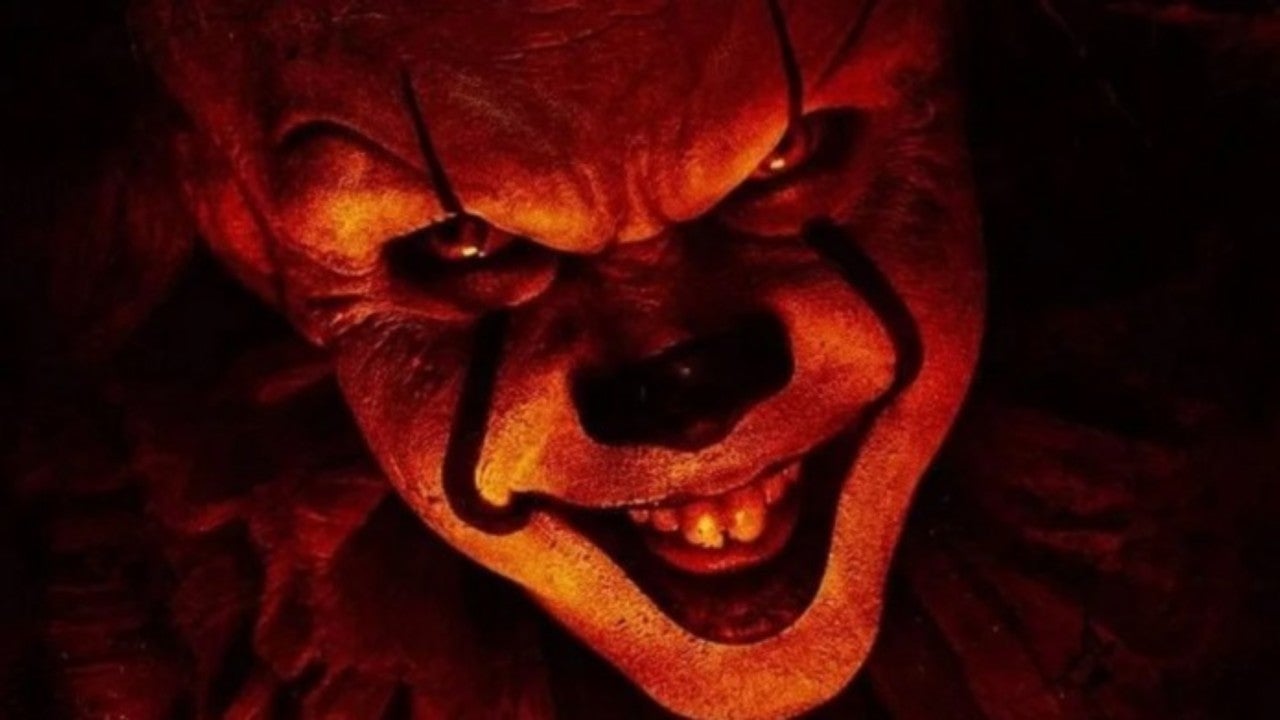It’s also precisely those reasons or lack thereof, that It: Chapter Two is a massive disappointment. A close to three-hour-long film with an abundance of weightless sequences and very little character development. Sluggish would be the best way to describe most of it. But it’s also a film that embraces some of the weirder, outlandish and frankly WTF aspects of Stephen King’s 1000 page magnum opus in sequences that salvage the whole thing. It’s twenty-seven years after The Losers took on Pennywise for the very first time. Most of the kids have grown up, moved out of their creepy hometown, Derry, and are living lives of their own with varying degrees of success. Some of them are struggling artists and writers, a couple of them are married and the chubby boy Ben now looks like he belongs on the cover of Calvin Klein. All of them have rather supernaturally forgotten large portions of their time as kids, as if Hermione Granger had just cast a memory wiping spell on them, no thanks to Pennywise of course. One day, they receive a shocking phone call from Mike Hanlon, the only member of The Losers Club who stayed back in town all those years. The brutal attacks have begun again. Pennywise has returned. And only The Losers can stop them, together, as a united front. The premise, which sounds like a superhero movie isn’t the issue. It’s that despite being a film that’s supposed to centre around the adults and deal with more mature problems, It: Chapter Two spends a ridiculous amount of time on flashbacks, wallowing in nostalgia. But there is a sprinkle of great scenes. Adult Beverly (Jessica Chastain) is introduced to us in a stomach-lurching sequence — perhaps the most haunting in the film. When she gets the phone call from Mike, she informs her fiance that she’s heading back to her hometown for a bit. At first, her fiance seems like a good man, receptive and understanding. But the air in which returning director Andy Muschietti fills the frame feels like its slowly draining. Like Dr Jekyll and Mr Hyde, the fiance starts to turn. First, he blames her for lying to him and then the belt comes out. It’s a well-written and staged sequence, one that shows us that despite leaving town, the abuse faced by Beverly as a kid has messed with her mind, her past trauma has stuck to her like a parasite that just won’t die, so much so that she ended up getting together with the exact type of man she grew up resenting. But why is this intriguing character conflict resolved quickly, immediately and never brought back again?
For the remaining of It: Chapter Two, Beverly’s arc is romantic cheese (i.e. who wrote her that beautiful poem when she was a kid?) I’m not against having a romantic angle in the film, but choosing that to be Beverly’s primary discord is a creative decision so baffling and silly, it actually makes perfect sense that Gary Dauberman (The Nun, Annabelle Comes Home) is the sole screenwriter. We get a flashback of Richie discovering his sexuality. But as an adult, Richie (Bill Hader) spends most of his time cracking jokes and comically threatening to leave The Losers to take on Pennywise by themselves. How does being a closeted gay make adult Richie feel? Why doesn’t he have conversations about it with his friends? The closing moments of Billy’s (James McAvoy) arc in the climax is terrific, but it lacks proper emotional gravitas as it relies on us believing that the man has lived his whole life blaming himself for the death of his little brother. Unfortunately, there’s only one sequence in the film that suggests he actually feels that way. Other than that, he’s the centre of a running gag in which multiple characters tell him he’s unable to write good endings to his books (a chuckle-worthy meta-joke as Stephen King himself is known to write brilliant books with disappointing endings) and he’s also part of that silly love triangle angle with Beverly and Ben.
Andy Muschietti and Gary Dauberman are so obsessed with nostalgia and so enamoured by the success of It: Chapter One that they take every tiniest of opportunities to cut back to the past, even if it’s just to see The Losers playing paddle ball in their secret clubhouse. We’ve seen an entire film where the kids run around in fear of Pennywise, so why do we need another hollow flashback where Finn Wolfhard gets chased around by the clown? It’s The Losers, in their adult forms that have to defeat Pennywise, yet sequences that earnestly evoke a sense of discomfort, like the one with Beverly and her fiance, are few and far between. This makes the film a sluggish affair, one that jumps from character to character, scene to scene without tightening the noose or escalating the conflict. There’s also the CGI monsters that constantly keep popping up. Stephen King’s book is deeply psychological, Muschietti’s It: Chapter Two is a roller coaster ride. Depending on what you look forward to in horror films, that can either come off as a compliment or a criticism.
The climax, though, is spectacular. It’s fantastically shot (by cinematographer Checco Varese) and designed, with great moments of action and pure terror. The battle against Pennywise takes place underground, as metallic blue alien flames light up the darkness like lightning during a stormy night. It’s gorgeous. A lot of the character arcs, particularly that of Bill and Richie’s is wrapped up beautifully. Bill Hader in particular, delivers a heart-wrenching performance that almost opened the floodgates of my tear ducts. I also love that it embraces the unfathomable aspects of the Stephen King novel, including a Native American tribal ritual and (portions of) Pennywise’s backstory that was clearly penned by an author who was high on seventy-two different drugs. And of course, Bill Skarsgard is tremendous. That said, It: Chapter Two is a lethargic watch. One that takes almost everything that you love about the first film — the adventure, the exploration of trauma and the restrained usage of CGI monsters — and throws it out of the window. It isn’t terrible, but man is it unsatisfying.


